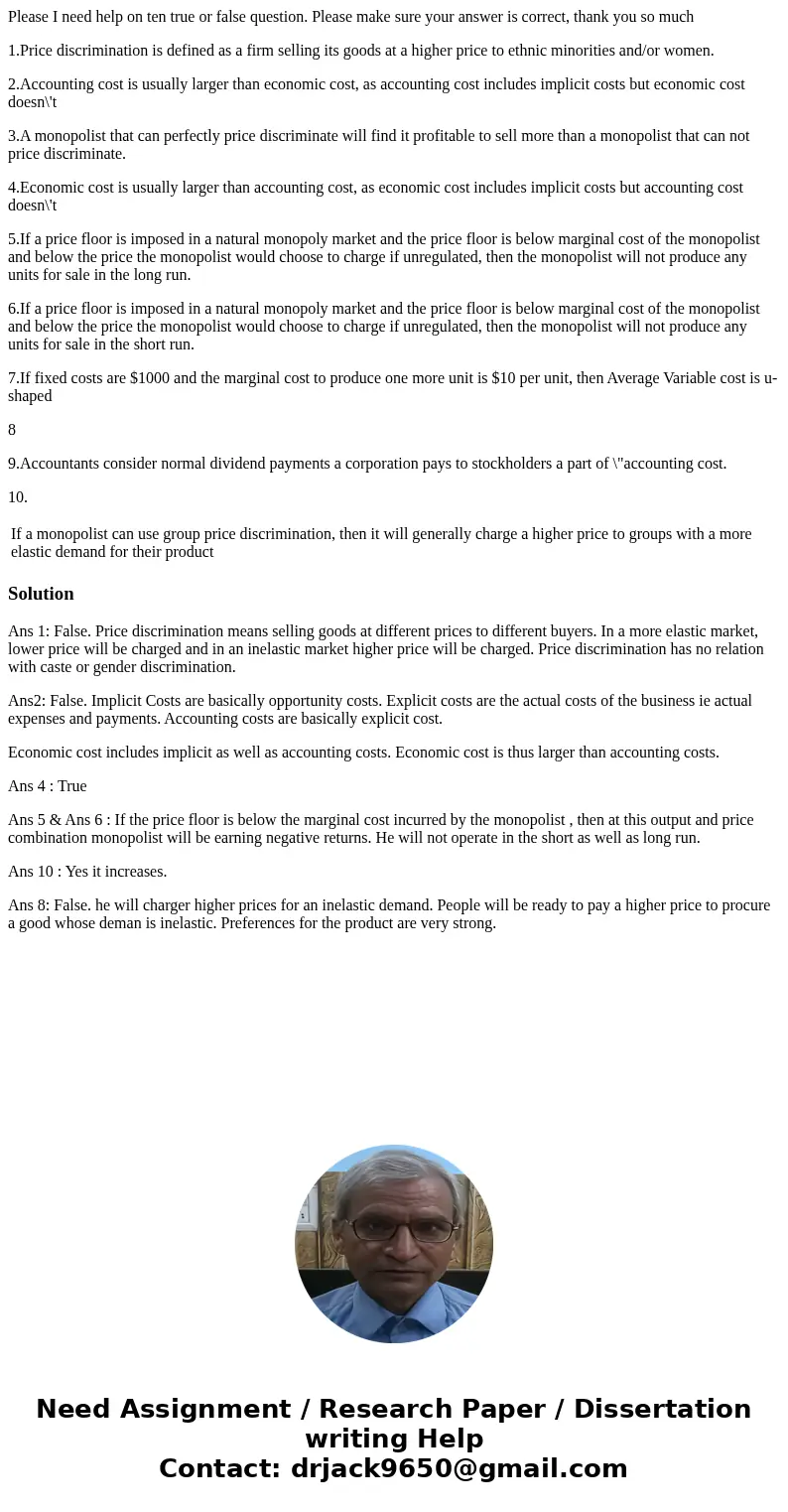Please I need help on ten true or false question Please make
Please I need help on ten true or false question. Please make sure your answer is correct, thank you so much
1.Price discrimination is defined as a firm selling its goods at a higher price to ethnic minorities and/or women.
2.Accounting cost is usually larger than economic cost, as accounting cost includes implicit costs but economic cost doesn\'t
3.A monopolist that can perfectly price discriminate will find it profitable to sell more than a monopolist that can not price discriminate.
4.Economic cost is usually larger than accounting cost, as economic cost includes implicit costs but accounting cost doesn\'t
5.If a price floor is imposed in a natural monopoly market and the price floor is below marginal cost of the monopolist and below the price the monopolist would choose to charge if unregulated, then the monopolist will not produce any units for sale in the long run.
6.If a price floor is imposed in a natural monopoly market and the price floor is below marginal cost of the monopolist and below the price the monopolist would choose to charge if unregulated, then the monopolist will not produce any units for sale in the short run.
7.If fixed costs are $1000 and the marginal cost to produce one more unit is $10 per unit, then Average Variable cost is u-shaped
8
9.Accountants consider normal dividend payments a corporation pays to stockholders a part of \"accounting cost.
10.
| If a monopolist can use group price discrimination, then it will generally charge a higher price to groups with a more elastic demand for their product |
Solution
Ans 1: False. Price discrimination means selling goods at different prices to different buyers. In a more elastic market, lower price will be charged and in an inelastic market higher price will be charged. Price discrimination has no relation with caste or gender discrimination.
Ans2: False. Implicit Costs are basically opportunity costs. Explicit costs are the actual costs of the business ie actual expenses and payments. Accounting costs are basically explicit cost.
Economic cost includes implicit as well as accounting costs. Economic cost is thus larger than accounting costs.
Ans 4 : True
Ans 5 & Ans 6 : If the price floor is below the marginal cost incurred by the monopolist , then at this output and price combination monopolist will be earning negative returns. He will not operate in the short as well as long run.
Ans 10 : Yes it increases.
Ans 8: False. he will charger higher prices for an inelastic demand. People will be ready to pay a higher price to procure a good whose deman is inelastic. Preferences for the product are very strong.

 Homework Sourse
Homework Sourse